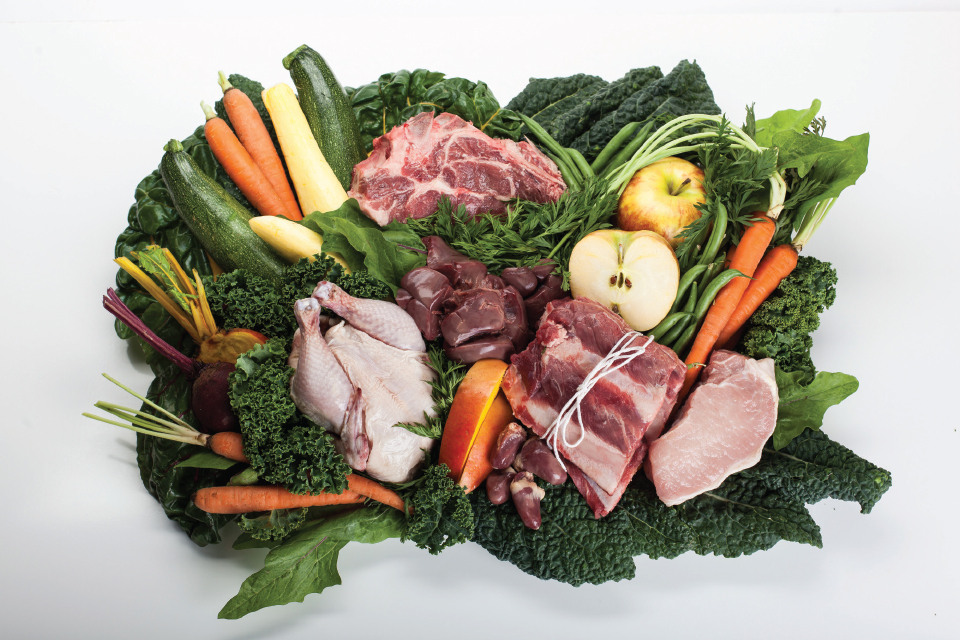Changing Your Dog’s Food

Just as Americans are suffering from an obesity epidemic, so are their pets. According to the Association for Pet Obesity Prevention, nearly half of American dogs are overweight. Obesity in dogs can lead to diabetes, arthritis, high blood pressure, kidney failure, and shorter life spans. That extra weight is literally killing America’s pets.
One problem for pet owners who are working to help their dogs become healthier is that most traditional dog food contains ingredients with low nutritional value. All that canned food and kibble may be damaging to a dog’s health, and owners are taking matters into their own hands by assuming more ownership of their pets’ food quality. This rapidly growing movement of consumers concerned about providing more nutritionally dense feed has created a revolution in the pet food sector.
 photo by Teresa Chang
photo by Teresa ChangThere is an alternative to kibble: raw, biologically appropriate foods. After all, dogs and their wild brethren wolves have been carnivores for thousands of years. It was really only in the last 60 years, with the advent of highly processed kibble, that dogs started eating cooked foods with high carbohydrate loads. Switching to a balanced diet of raw, whole foods could prove wondrous for your pup’s health.
A balanced raw diet consists of approximately 80 percent muscle meat and bones, 10 percent organ meat, and 10 percent vegetables. Mimicking your pet’s naturally occurring ancestral wild diet achieves a host of health benefits. Your dog may have more energy (get that tennis ball ready), smaller stools (thank goodness), and a shinier coat (which the ladies will love); it’ll also be healthier and happier, and research has shown that it will live a longer life.
The two most common ingredients found in pet foods are rendered meats and carbohydrates. What is rendered meat? “Rendering” uses chemical and mechanical processes to separate dead animals into three substances: carcass meal (protein-based solids), melted fat (tallow), and water. If it meets certain FDA standards, carcass meal can be used in pet food to provide an inexpensive source of protein. Carbohydrates act as a filler. Dogs, unlike people, don’t have any great need for carbohydrates; they can’t effectively digest them, as they are missing a critical enzyme in their salivary glands, amylase, which helps break down starches into digestible nutrients. And yet nearly all kibble has an unnecessarily high carbohydrate load. Grains, soy, sweet potatoes, and brown rice are all used as additives to increase the dry matter needed for processing.
Switching to raw food is not the whole answer, though. You also have to be sure that you’re meeting your pet’s nutritional needs by supplying the right amount and variety of macro- and micronutrients and minerals. Studies have shown that many home-prepared pet foods are deficient in several critical nutrients and vitamins. Consult with your veterinarian to get advice before changing your dog’s diet. Also be sure to use a veterinarian- or nutritionist-approved formulation and pre-measure your food to ensure you are providing your pup with a balanced and complete diet.
If you are looking for a more convenient alternative, many pet stores are carrying a growing line of raw dog food.






